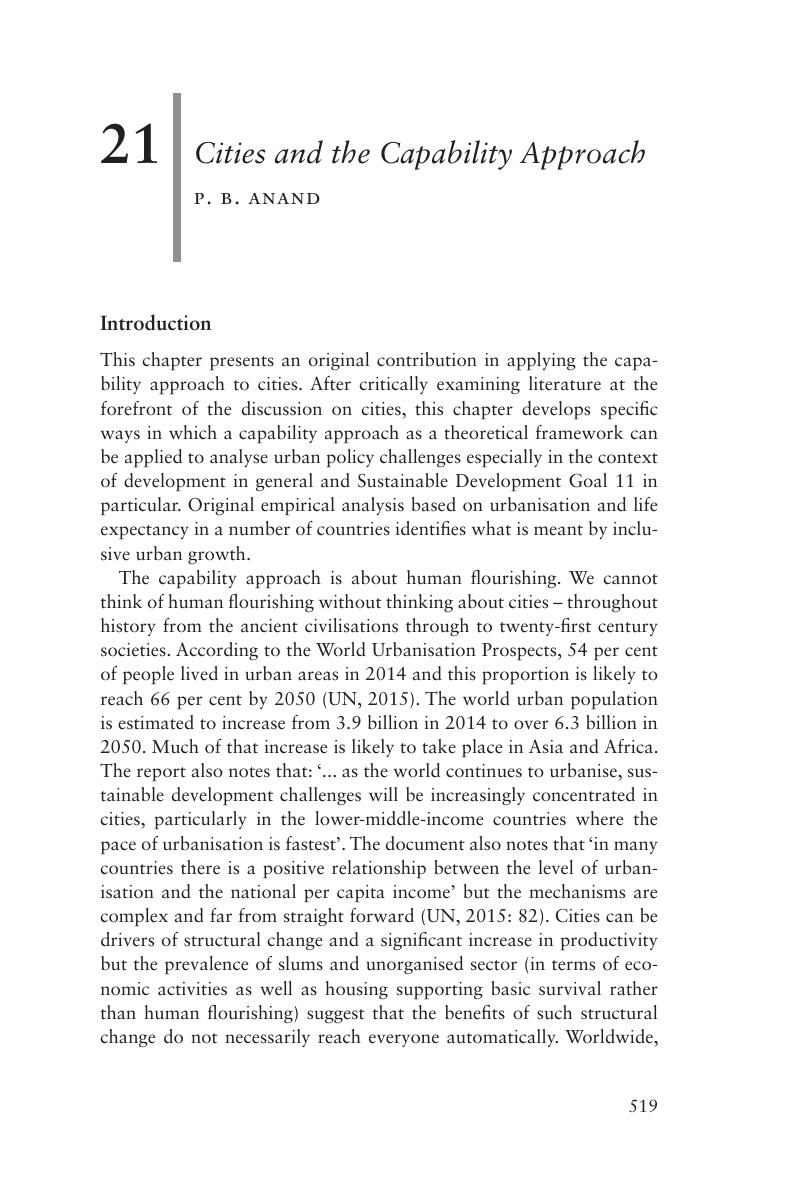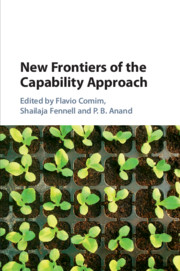Book contents
- New Frontiers of the Capability Approach
- New Frontiers of the Capability Approach
- Copyright page
- Contents
- Figures
- Tables
- Contributors
- Preface and Acknowledgements
- 1 Introduction
- 2 On Sen on the Capability of Capabilities
- Part I The Need for New Foundations
- Part II The Operationalisation Frontier
- Part III The Application Frontier
- Part IV The Housing and Urban Frontier
- 19 Tracking the Transition From ‘Basic Needs’ to ‘Capabilities’ for Human-Centred Development
- 20 Building Regulations through the Capability Lens
- 21 Cities and the Capability Approach
- Part V The Education Frontier
- Author Index
- Subject Index
- References
21 - Cities and the Capability Approach
from Part IV - The Housing and Urban Frontier
Published online by Cambridge University Press: 08 October 2018
- New Frontiers of the Capability Approach
- New Frontiers of the Capability Approach
- Copyright page
- Contents
- Figures
- Tables
- Contributors
- Preface and Acknowledgements
- 1 Introduction
- 2 On Sen on the Capability of Capabilities
- Part I The Need for New Foundations
- Part II The Operationalisation Frontier
- Part III The Application Frontier
- Part IV The Housing and Urban Frontier
- 19 Tracking the Transition From ‘Basic Needs’ to ‘Capabilities’ for Human-Centred Development
- 20 Building Regulations through the Capability Lens
- 21 Cities and the Capability Approach
- Part V The Education Frontier
- Author Index
- Subject Index
- References
Summary

- Type
- Chapter
- Information
- New Frontiers of the Capability Approach , pp. 519 - 546Publisher: Cambridge University PressPrint publication year: 2018
References
- 5
- Cited by



